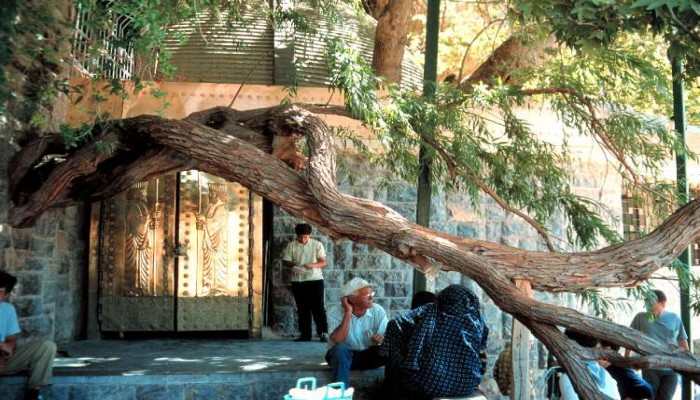Pir-e-Sabz shrine
For Iranian Zoroastrians, summer begins with the pilgrimage to Pir-e-Sabz. This remote site is the holiest and most visited of the Zoroastrian mountain shrines. Shrine legends tell of a conquering Arab army that had pursued Nikbanoo, the daughter of the Sassanian Emperor Yazdgird III, to this region. Fearing capture, she prayed to Ahura Mazda to protect her from the enemy. In the nick of time the mountain miraculously opened up and gave her protection. This legendary site, where a holy spring issues from the towering cliff, is also called Chak-Chak, which means 'drop-drop' in Persian. Growing beside the source of the holy spring is an immense and ancient tree which legends says used to be Nikbanoo's cane, and the waters of the spring are believed to be tears of grief shed by the mountain for Lady Nikbanoo. The shrine enclosure, a man-made cave, is floored with marble and its walls are darkened by soot from the fires kept eternally burning in the sanctuary. Each year from June 14 to 18, many thousands of Zoroastrians from Iran, India and other countries flock to the temple of Pir-e Sabz. One of the pilgrim trails to Chak-Chak is a dirt road starting near the village of Elabad, north of Yazd. It is a time-honored tradition for pilgrims to stop the moment they see the sight of the shrine and continue the rest of their journey by foot. Several roofed pavilions have been constructed on the cliffs below the shrine and throughout the day and night these are tightly packed with pilgrims.





